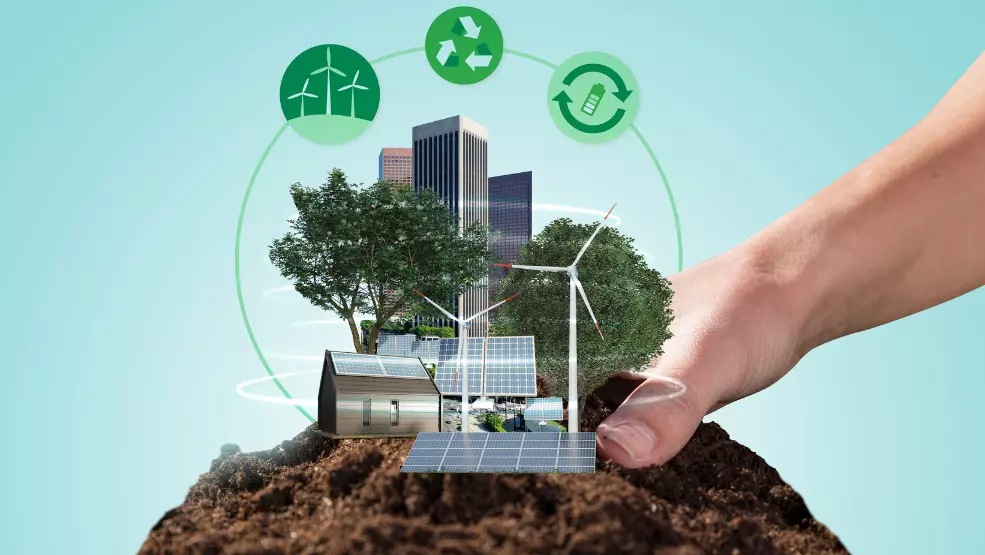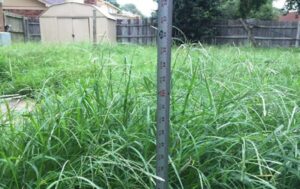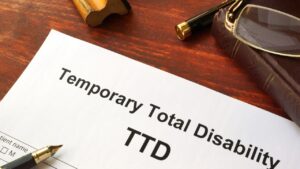
In the realm of property management, maintaining commercial properties is not merely a matter of aesthetics but a critical aspect of ensuring longevity, sustainability, and functionality. In this digital age, leveraging the right technologies and professional services can significantly enhance the efficiency and effectiveness of commercial property maintenance efforts. This article explores the essential elements of commercial property maintenance, highlighting the importance of proactive upkeep and the utilization of modern tools and practices to preserve commercial assets to get Website.
- Introduction to Commercial Property Maintenance
A. Importance of Proper Maintenance
Commercial properties represent significant investments, and proper maintenance is essential for protecting these assets, preserving their value, and ensuring their longevity.
B. Role of Professional Services
Professional property maintenance services offer expertise, resources, and specialized equipment necessary for comprehensive upkeep, addressing various maintenance needs efficiently and effectively.
C. Utilizing Technology for Efficient Maintenance
Modern technologies, such as property management software and predictive maintenance tools, streamline maintenance workflows, optimize resource allocation, and enhance decision-making processes.
II. Exterior Maintenance of Commercial Properties
A. Structural Inspections and Repairs
Regular structural inspections and repairs address issues such as roof damage, facade deterioration, and pavement deterioration, preventing costly structural damage and safety hazards.
1. Roof Maintenance
Routine roof inspections and repairs, including the replacement of damaged shingles, repair of leaks, and reinforcement of weak areas, extend the lifespan of commercial roofs and prevent water damage.
2. Facade and Exterior Wall Maintenance
Exterior wall inspections and repairs, such as caulking, sealing, and repointing, protect buildings from moisture infiltration, mold growth, and structural degradation, maintaining their integrity and appearance.
3. Parking Lot and Pavement Maintenance
Parking lot maintenance, including crack sealing, pothole repairs, and line striping, enhances safety, accessibility, and curb appeal, providing a positive impression for customers and visitors.
B. Landscaping and Groundskeeping
Professional landscaping and groundskeeping services ensure that commercial properties present an attractive and inviting appearance, enhancing curb appeal and tenant satisfaction.
1. Lawn and Landscape Maintenance
Regular mowing, edging, fertilizing, and weed control promote healthy, vibrant landscapes, creating a welcoming environment for customers, employees, and tenants.
2. Tree and Shrub Care
Pruning, trimming, and pest control treatments preserve the health and appearance of trees and shrubs, minimizing safety risks and preventing damage to buildings and infrastructure.
3. Irrigation System Maintenance
Proper irrigation system maintenance, including regular inspections, adjustments, and repairs, ensures efficient water distribution, conserves resources, and promotes the health of landscape vegetation.
C. Exterior Painting and Finishing
Exterior painting and finishing projects protect commercial properties from environmental damage, enhance aesthetic appeal, and contribute to overall property value.
1. Surface Preparation
Thorough surface preparation, including cleaning, priming, and caulking, ensures proper adhesion and longevity of paint coatings, maximizing their protective properties and durability.
2. Paint Application Techniques
Professional paint application techniques, such as spray, brush, and roller methods, ensure even coverage, uniform color distribution, and smooth finishes, achieving high-quality results that withstand the elements.
3. Protective Coatings and Sealants
Application of protective coatings and sealants, such as waterproofing membranes and elastomeric coatings, enhances weather resistance, prevents moisture infiltration, and prolongs the lifespan of exterior surfaces.
III. Interior Maintenance of Commercial Properties
A. HVAC System Maintenance
Regular HVAC system maintenance ensures optimal indoor comfort, energy efficiency, and air quality, reducing operating costs and minimizing tenant complaints.
1. Air Conditioning Maintenance
Scheduled air conditioning maintenance tasks, including filter replacement, coil cleaning, and refrigerant recharge, optimize system performance, prevent breakdowns, and extend equipment lifespan.
2. Heating System Maintenance
Routine heating system maintenance, such as furnace inspections, burner cleanings, and thermostat calibration, ensures reliable operation, reduces energy consumption, and promotes occupant comfort.
3. Ventilation System Cleaning and Inspection
Periodic ventilation system cleaning and inspection remove dust, debris, and contaminants, improving indoor air quality, preventing microbial growth, and maintaining system efficiency.
B. Electrical System Maintenance
Proactive electrical system maintenance prevents electrical failures, reduces fire risks, and ensures uninterrupted power supply for commercial operations.
1. Lighting Maintenance
Regular lighting maintenance tasks, including bulb replacement, fixture cleaning, and ballast inspection, maintain adequate illumination levels, enhance safety, and prolong the lifespan of lighting equipment.
2. Electrical Panel Inspections
Scheduled electrical panel inspections identify potential hazards, such as overloaded circuits, loose connections, and corrosion, preventing electrical malfunctions, disruptions, and safety hazards.
3. Wiring and Outlet Checks
Periodic wiring and outlet checks ensure code compliance, identify faulty wiring, and address issues such as exposed wires, damaged outlets, and tripping breakers, reducing the risk of electrical fires and accidents.
C. Plumbing System Maintenance
Proper plumbing system maintenance prevents water leaks, reduces water wastage, and ensures efficient operation of plumbing fixtures and appliances.
1. Pipe Inspections and Repairs
Regular pipe inspections using advanced technologies, such as video cameras and leak detection sensors, detect hidden leaks, corrosion, and pipe damage, preventing water damage and costly repairs.
2. Fixture Maintenance
Routine maintenance of plumbing fixtures, including faucet repairs, toilet replacements, and drain cleaning, prevents leaks, clogs, and water wastage, preserving water quality and reducing utility costs.
3. Drain Cleaning and Unclogging
Scheduled drain cleaning and unclogging services remove obstructions, such as grease, hair, and debris, from drains and sewer lines, preventing backups, odors, and property damage.
IV. Safety and Security Measures in Commercial Property Maintenance
A. Fire Safety Inspections and Equipment Maintenance
Regular fire safety inspections and equipment maintenance ensure compliance with fire codes, enhance occupant safety, and minimize property damage in the event of a fire.
1. Fire Alarm System Checks
Scheduled fire alarm system checks verify proper operation, battery backup, and communication with monitoring services, ensuring prompt detection and notification of fire emergencies.
2. Fire Extinguisher Inspections
Annual fire extinguisher inspections ensure that extinguishers are properly charged, accessible, and in good working condition, enabling occupants to respond effectively to small fires and prevent their spread.
3. Emergency Exit Maintenance
Regular maintenance of emergency exits, including door inspections, signage checks, and obstruction clearance, ensures safe egress for occupants during emergencies and complies with building codes and regulations.
B. Security System Maintenance
Ongoing security system maintenance ensures reliable operation, deters criminal activity, and provides peace of mind for property owners, tenants, and employees.
1. CCTV Camera Inspections
Scheduled CCTV camera inspections verify camera alignment, lens cleanliness, and recording functionality, enhancing surveillance coverage and facilitating incident investigations.
2. Access Control System Checks
Regular access control system checks ensure proper operation of keycard readers, biometric scanners, and electronic locks, preventing unauthorized access and safeguarding sensitive areas.
3. Alarm System Testing
Periodic alarm system testing, including sensor checks, alarm verification, and communication tests, confirms system readiness, reduces false alarms, and ensures prompt response to security incidents.
C. Compliance with Regulations and Standards
Compliance with regulatory requirements and industry standards is essential for maintaining a safe, healthy, and legally compliant commercial property environment.
1. ADA Compliance Inspections
ADA compliance inspections ensure that commercial properties are accessible to individuals with disabilities, addressing issues such as ramp slopes, doorway widths, and accessible parking spaces.
2. Building Code Compliance Checks
Regular building code compliance checks verify adherence to local building codes and ordinances, ensuring that commercial properties meet safety, structural, and occupancy requirements.
3. Environmental Health and Safety Audits
Environmental health and safety audits assess potential hazards, risks, and compliance gaps related to hazardous materials, indoor air quality, and environmental regulations, promoting occupant health and environmental sustainability.
V. Sustainable Practices in Commercial Property Maintenance
A. Energy Efficiency Upgrades and Retrofits
Energy efficiency upgrades and retrofits reduce energy consumption, lower utility costs, and minimize environmental impact while enhancing occupant comfort and productivity.
1. LED Lighting Installation
LED lighting installation replaces inefficient lighting fixtures with energy-efficient LED fixtures, reducing electricity usage, heat output, and maintenance costs while providing superior lighting quality and longevity.
2. HVAC System Upgrades
HVAC system upgrades, such as installing high-efficiency equipment, optimizing ductwork, and implementing zoning controls, improve system performance, comfort, and energy savings, enhancing indoor environmental quality and occupant satisfaction.
3. Insulation and Weatherproofing
Insulation and weatherproofing measures, including adding insulation, sealing air leaks, and upgrading windows and doors, reduce heat transfer, drafts, and energy losses, creating a more comfortable and energy-efficient building envelope.
B. Water Conservation Initiatives
Water conservation initiatives reduce water consumption, lower utility costs, and mitigate environmental impact while preserving water resources and promoting sustainable building practices.
1. Low-Flow Fixture Installation
Installation of low-flow plumbing fixtures, such as faucets, toilets, and urinals, reduces water usage, sewage volumes, and utility expenses while maintaining water pressure and performance.
2. Irrigation System Upgrades
Irrigation system upgrades, such as installing smart controllers, drip irrigation, and rain sensors, optimize water distribution, minimize runoff, and promote healthy landscapes while conserving water resources and reducing water bills.
3. Leak Detection and Repair
Proactive leak detection and repair programs identify and address water leaks, drips, and wastage in plumbing systems, preventing property damage, mold growth, and water-related expenses while conserving water and reducing utility costs.
C. Waste Management and Recycling Programs
Waste management and recycling programs reduce waste generation, minimize landfill contributions, and promote sustainable practices while improving operational efficiency and reducing waste disposal costs.
1. Waste Reduction Strategies
Implementation of waste reduction strategies, such as source reduction, recycling, and composting, minimizes waste generation, conserves resources, and reduces environmental impact while lowering waste management expenses.
2. Recycling Bin Placement and Management
Placement of recycling bins in convenient locations, along with clear signage and education initiatives, encourages recycling participation among building occupants, diverts recyclable materials from landfills, and promotes environmental stewardship.
3. Hazardous Waste Disposal Protocols
Establishment of hazardous waste disposal protocols ensures safe handling, storage, and disposal of hazardous materials, such as chemicals, batteries, and electronic waste, minimizing environmental contamination, regulatory risks, and liability exposure.






